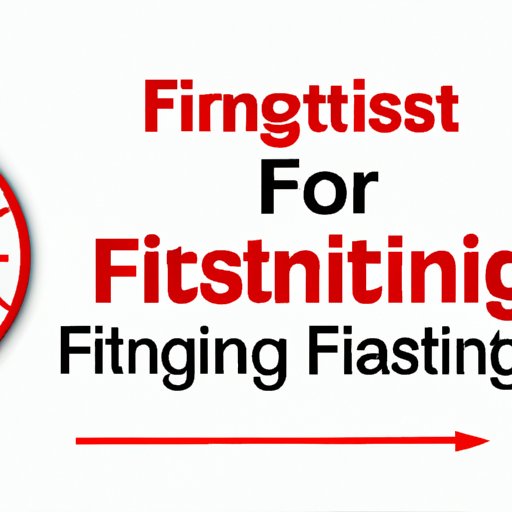
Introduction
Fasting, the practice of abstaining from food and drink for a certain period of time, has become increasingly popular as a weight loss strategy. Some people use fasting to kickstart their weight loss journey, while others see it as a way to maintain a healthy weight. However, there are potential benefits and drawbacks to this approach that should be carefully considered before embarking on a fasting regimen.
Overview of Different Types of Fasting
There are several different types of fasting, including intermittent fasting, extended fasting, and alternate-day fasting. Intermittent fasting, which involves periods of eating followed by periods of fasting, is the most popular form of fasting for weight loss. Extended fasting typically lasts for more than 24 hours, while alternate-day fasting involves alternating between days of eating normally and days of fasting.
Each form of fasting can affect weight loss differently. Intermittent fasting has been shown to increase fat loss while preserving muscle mass, while extended fasting can result in more rapid weight loss. Alternate-day fasting may also be effective for weight loss, but may not be sustainable long-term.
Research on Weight Loss Through Fasting
Research on the weight loss benefits of fasting is limited, but some studies suggest that it can be an effective way to lose weight. One study found that participants who followed an intermittent fasting regimen lost an average of 7.7 pounds over 11 weeks. Another study found that alternate-day fasting led to significant reductions in body weight and fat mass.
However, it is important to note that more research is needed to fully understand the long-term effects of fasting on weight loss and overall health.
Tips and Strategies for Maximizing Weight Loss During a Fast
If you are considering fasting as a weight loss strategy, there are some tips and strategies that can help you maximize your results. First and foremost, it is important to drink plenty of water to stay hydrated and help flush out toxins during the fast.
During eating periods, focus on nutrient-dense foods such as fruits, vegetables, lean protein, and whole grains. This will help ensure that your body is getting the nutrients it needs to function properly.
It is also important to pay attention to hunger cues and avoid overeating during eating periods. Finally, be patient and don’t expect to see immediate results – weight loss through fasting can take time and discipline.
Real-World Success Stories
There are many real-world success stories of people who have lost significant amounts of weight through fasting. One example is Mimi Ikonn, a YouTube creator who lost over 20 pounds through intermittent fasting. She credits her success to a combination of healthy eating habits during eating periods and patience during the fasting periods.
Another success story is that of Jason Fung, a physician who has helped many of his patients lose weight through fasting. His approach involves combining intermittent fasting with a low-carb, high-fat diet to help patients achieve sustainable weight loss.
Addressing Common Concerns and Questions
One common concern about fasting for weight loss is whether it is healthy and sustainable long-term. While fasting can be safe and effective in the short-term, it is important to talk to a healthcare professional before starting a fasting regimen to ensure it is appropriate for your individual needs.
Another concern is rebound weight gain after fasting. To avoid this, it is important to maintain healthy eating habits during eating periods and to continue to be mindful of portion sizes and hunger cues after the fast is over.
Conclusion
Fasting can be a helpful tool for weight loss, but it is not a magic solution. It is important to approach fasting as part of a comprehensive weight loss plan that includes healthy eating habits and exercise. By understanding the benefits and drawbacks of fasting and implementing strategies to maximize your results, you can achieve your weight loss goals in a healthy and sustainable way.





